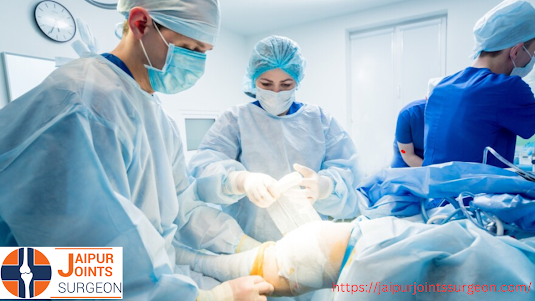ACL Repair vs Reconstruction: Benefits, Risks & Recovery
The anterior cruciate ligament (ACL) is a crucial ligament that stabilizes the knee joint. ACL injuries are common in athletes and can occur due to sudden movements or impacts that cause the ligament to tear. When an ACL injury occurs, patients have two main treatment options: ACL repair and ACL reconstruction. In this blog, we'll discuss the benefits, risks, and recovery associated with each procedure.
ACL Repair
ACL repair involves suturing the torn ends of the ACL back
together. This procedure is only suitable for patients with partial tears or
avulsion fractures, where the ligament has pulled a piece of bone away from the
knee. The advantages of ACL repair are that it preserves the natural ligament
and reduces the risk of complications associated with graft harvest. It also
allows for faster recovery and returns to sports.
However, ACL repair has some limitations. It is only
suitable for a small percentage of patients, and the repaired ligament may not
be as strong as the original. There is also a risk of re-injury, particularly
for high-demand athletes.
ACL Reconstruction
ACL reconstruction involves replacing the torn ligament with
a graft, typically taken from the patient's own hamstring or patellar tendon,
or from a cadaver. This procedure is suitable for patients with complete ACL
tears or partial tears that cannot be repaired.
The benefits of ACL reconstruction are that it provides a
strong and stable new ligament that can withstand high-demand activities. It
also reduces the risk of re-injury, particularly for high-demand athletes. ACL
reconstruction has a high success rate and is the most common surgical
procedure used to treat ACL injuries.
However, ACL reconstruction has some risks. Graft harvesting
can cause complications such as pain, swelling, and weakness. There is also a
risk of infection, nerve damage, and blood clots. Recovery from ACL
reconstruction can take longer than ACL repair, and patients may need to
undergo rehabilitation to regain the full function of their knee.
Recovery
Recovery from ACL repair and reconstruction varies depending
on the severity of the injury and the type of surgery performed. Generally,
patients can expect to wear a knee brace and use crutches for several weeks
after surgery. Physical therapy is an essential component of recovery and helps
to strengthen the knee, improve the range of motion, and reduce pain and swelling.
Patients should avoid high-impact activities and sports until they have fully
recovered.
.jpg)



Comments
Post a Comment